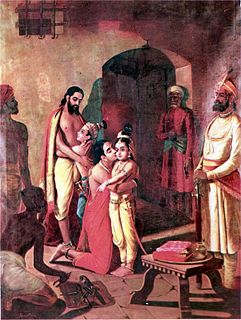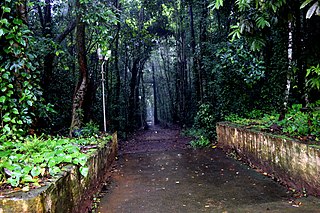This page is based on this
Wikipedia article Text is available under the
CC BY-SA 4.0 license; additional terms may apply.
Images, videos and audio are available under their respective licenses.

Tibet is a historical region covering much of the Tibetan Plateau in Inner Asia. It is the traditional homeland of the Tibetan people as well as some other ethnic groups such as Monpa, Tamang, Qiang, Sherpa, and Lhoba peoples and is now also inhabited by considerable numbers of Han Chinese and Hui people. Tibet is the highest region on Earth, with an average elevation of 5,000 metres (16,000 ft). The highest elevation in Tibet is Mount Everest, Earth's highest mountain, rising 8,848 m (29,029 ft) above sea level.

In Hinduism, Devaki (देवकी) is the daughter of Ugrasena, sister of Kamsa, wife of Vasudeva and mother of Krishna.

Arunachal Pradesh is one of the 29 states of India and is the northeastern-most state of the country. Arunachal Pradesh borders the states of Assam and Nagaland to the south and shares international borders with Bhutan in the west, Myanmar in the east and is separated from China in the north by the McMahon Line. Itanagar is the capital of the state.

The Tibetan people are an ethnic group native to Tibet. Their current population is estimated to be around 6 million. In addition to living in Tibet, significant numbers of Tibetans live in other parts of China, as well as India, Nepal, and Bhutan.

Zhangzhung or Shangshung was an ancient culture and kingdom of western and northwestern Tibet, which pre-dates the culture of Tibetan Buddhism in Tibet. Zhangzhung culture is associated with the Bon religion, which in turn, has influenced the philosophies and practices of Tibetan Buddhism. Zhangzhung people are mentioned frequently in ancient Tibetan texts as the original rulers of central and western Tibet. Only in the last two decades have archaeologists been given access to do archaeological work in the areas once ruled by the Zhangzhung.

The music of Tibet reflects the cultural heritage of the trans-Himalayan region, centered in Tibet but also known wherever ethnic Tibetan groups are found in Nepal, Bhutan, India and further abroad. First and foremost Tibetan music is religious music, reflecting the profound influence of Tibetan Buddhism on the culture.

The Tibetan Muslims, also known as the Kachee, form a small minority in Tibet. Despite being Muslim, they are officially recognized as Tibetans by the government of the People's Republic of China, unlike the Hui Muslims, who are separately recognized. The Tibetan word Kachee literally means Kashmiri and Kashmir was known as Kachee Yul.
Standard Tibetan is the most widely spoken form of the Tibetic languages. It is based on the speech of Lhasa, an Ü-Tsang dialect. For this reason, Standard Tibetan is often called Lhasa Tibetan. Tibetan is an official language of the Tibet Autonomous Region of the People's Republic of China. The written language is based on Classical Tibetan and is highly conservative.

Ugrasena is a legendary Yadava king in Hindu mythology. He was the king of Mathura, a kingdom that was established by the powerful Vrishni tribes from Yaduvanshi clan. Lord Krishna is the grandson of Ugrasena. He established his grandfather as the ruler of Mathura again after defeat his uncle King Kamsa who is a wicked ruler. Before this King Ugrasena was overthrown from power by Kamsa his own son and he sentenced Ugrasena his father and his sister Devaki and her husband Vasudeva to prison. They are parents of Lord Krishna.
King Ahuk had 2 sons namely Devak and Ugrasena. Devak had 4 sons and 7daughters(Devaki, Santideba,sandeba,debrakhshita,brikdevi,upadebi,sunamni).all these 7 daughters were married to vasudeva father of Krishna.
Kamsa is a village in the Tibet Autonomous Region of China.

Iringole Kavu is a famous Hindu In forest temple dedicated to Goddess Durga, situated in Kunnathunad Taluk of Ernakulam district, 2.5 km from Perumbavoor. This is one of the 108 Durga Temples in Kerala believed to have been consecrated by Lord Parasurama, the sixth avatar of Lord Vishnu.
Education in Tibet is the public responsibility of the Ministry of Education of the People's Republic of China. Education of ethnic Tibetans is partly subsidized by the government. Primary and secondary education is compulsory, while preferential policies aimed at Tibetans seek to enroll more in vocational or higher education.

In Hindu mythology, Keshi is the horse-demon, killed by Krishna, an avatar of the god Vishnu. The demon was dispatched by Krishna's evil uncle Kamsa, who was destined to die at Krishna's hands.
Tibetan Sign Language is the recently established deaf sign language of Tibet.
The Kamëntsá are an indigenous people of Colombia. They primarily live in the Sibundoy Valley of the Putumayo Department in the south of Colombia.










